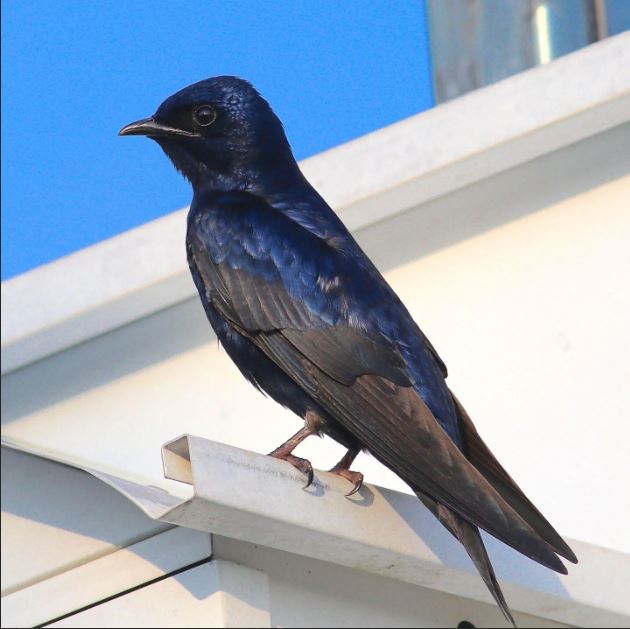
Each spring, usually in late February or early March, the purple martins return to the Brazos Valley.
Their arrival is eagerly awaited by purple martin lovers who spend a lot of time and effort getting the martins’ Brazos Valley homes ready. What many of these landlords don’t know is that after the birds spend the spring and summer in backyards across not only the Brazos Valley, but most of the United States, they don’t just leave those yards and fly straight home to South America. Instead, they do something called “staging.”
In that process, they form large communal roosts in preparation for their flight south to the Amazon River Basin where they spend the winter. These roosts can contain thousands of birds which leave in the morning for a day full of feeding in order to put on weight for the long, arduous migration flight. Watching them return for the night to their chosen roosting spot is quite a magnificent spectacle.
In Bryan and College Station, in years past, we have had wonderful opportunities to observe this process.
The show starts in mid-to-late July as the sun begins to go down. At first, it is only a trickle in the empty sky, maybe 10 birds flying about. Ten becomes 100. The waves keep coming in until the number is up in the thousands, then tens of thousands.
The birds feed while there is light in the sky, calling and circling as they do. The swirl begins to come closer to the treetops. Suddenly, some of the birds decide to land. More birds land until the trees look alive. Something happens, maybe a runner or a car goes by and the trees explode with birds. The circling begins again.
This happens repeatedly for a short time until finally it is dark enough that the birds stay in the treetops, regardless of cars, joggers or the birdwatchers sitting in the parking lot. The show repeats nightly for a couple of weeks, then, just as suddenly as they disappeared from their backyard apartments, they vanish from the staging roost and begin the journey to their wintering quarters.
The birds don’t schedule their time at the roost with the local birdwatchers, but generally it lasts about two weeks. It is always fun to hunt for the year’s roost site on a summer night. It has variously been in Northgate, at the College Station Walmart, at the CVS on Southwest Parkway and, for the past two to three years, at the West Campus Parking Garage on the Texas A&M campus where it is easily accessible for public viewing.
It is worth the price of parking to go up to the top of the garage and have the birds fly by at eye level. This summer, consider making a visit to the purple martin roost wherever it might be. It just may be the launching pad to the hobby of birding.
LINDA HALE Rio Brazos Audubon Society
